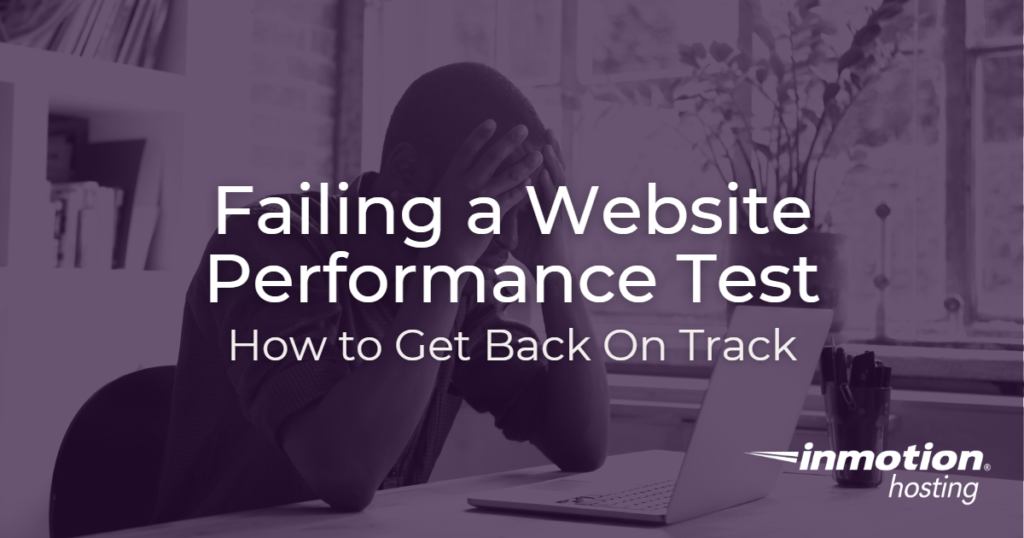
What can be done if you fail a website performance test? A lot of things, thankfully.
A website performance test measures page speed – the length of time it takes to display all the content on a specific page or the length of time it takes the server to receive that page’s first byte of information.
Why is that important? Because visitors aren’t going to sit around and wait for your page to load. In fact, most website visitors will leave if the process takes any more than three seconds.
If your website is slow to load, it’s time to remedy the situation. We’re going to go over a few causes of slow website load times (including website hosting) and what you can do to fix it.
Let’s get going!
Why speed matters
If you’ve ever waited too long for a website to load, you know how frustrating it can be. And let’s be honest here: when a page takes too long, do you sit around and wait? Or do you bounce?
Most web users won’t wait. They’ll just head on over to the next website instead.
When it comes to your own website, you don’t want your visitors to leave because it takes too long to load. Lost visitors equal lost sales, after all.
What is a good load time?
According to Google, a web page should take three seconds or less to load.
Unfortunately, most sites never even get close to that number. According to Google’s benchmark report findings, 70% of sites take almost seven seconds for visual content to display above the fold. And when it comes to mobile, the average load time is a full 22 seconds.
Are those website owners aware that their websites take so long to load? Perhaps. But maybe not – and that’s why running regular performance tests is necessary.
How to test page speed
Not sure how your website is performing? Or how to test its performance?
Google’s PageSpeed Insights (also available as a WordPress plugin) lets you see your pages’ load speed score as well as gives you the reasons that your page may not be loading as quickly as it should. In addition, there are several other WordPress plugins that can help diagnose problems and make your website faster.
We also recommend our guide on How to Stress Test your Website to help identify how much load your site can handle.
How to improve page speed
As you begin to test your page speed regularly, you will discover that there are dozens of different factors that can contribute to slow load times. Therefore, it stands to reason that there are dozens of different things you can do to improve load times. Here are just a few:
- Reduce Server Response Time. Website hosting is one of the most important factors in site speed. If your server doesn’t have the appropriate resources to keep your site running smoothly, performance is going to suffer. If you find that your server is the issue, start by making sure your web host is running the latest PHP version. Next, make sure they are providing you with enough bandwidth and data to fully support your website – if not, it may be time to upgrade to a new plan.
- Minimize HTTP Request: An HTTP request happens anytime a browser requests anything from your server. The more on-page components you have, the longer this will take. To minimize requests, the solution is simply to de-clutter your website. Eliminate any plugins and themes you’re not using anymore, limit large graphics and embedded videos, and delete unused images.
- Enable Compression: In a nutshell, the smaller your files are, the faster they will load. WordPress plugins like reSmush.it or WP Smush automatically compress images on upload and can be used to reduce and optimize older images – drastically increasing load times.
- Audit your JavaScript: JavaScript is fantastic for adding dynamic elements to your website, but if it’s implemented incorrectly, it can cripple load times. Take a look at your website and determine what JavaScript scripts you really need – and which ones can go.
- Implement browser caching: Caching is a known way to improve the performance of your website. It’s a technique that allows you to store frequently used data points in ‘cached memory.’ That means that any time the server requests that same data again, it gets pulled from the cached memory rather than having to fully reload it.
It’s important to remember that while the tips we discussed in this article are vital to increased page speed, it is by no means a comprehensive list. Even small steps, though, can make a huge difference when it comes to overall site performance and increased conversions.
If you’d like to discuss how the right website hosting can help improve your page speed, contact us today. We offer a variety of hosting plans that will grow with your website as needs change.
We also recommend bookmarking our full guide on How to Stress Test Your Website / Top 3 Load Testing Tools for more information.